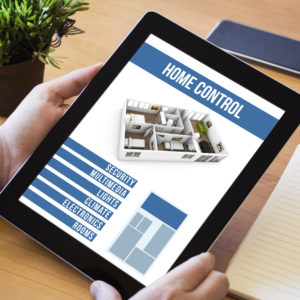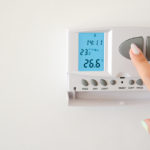 Your customers want more control over their household temperature and their energy bill, and they want the highest quality HVAC system their money can buy. That means more than smart thermostats and top-grade heating and cooling units, ducts and vents. It means an HVAC design that makes sense for their needs. In many cases, they need a zoned HVAC system.
Your customers want more control over their household temperature and their energy bill, and they want the highest quality HVAC system their money can buy. That means more than smart thermostats and top-grade heating and cooling units, ducts and vents. It means an HVAC design that makes sense for their needs. In many cases, they need a zoned HVAC system.
HVAC zoning is nothing new, of course, but it needs to be discussed for every installation. With smart thermostats and smart vents on the market, your customer’s expectations have changed. Make sure they know about the advantages of HVAC zoning so they can make informed decisions about the buildings in their care.
Zoned HVAC systems can – and should – work with smart thermostats, and they are much more effective than a smart thermostat on its own. Zoned HVAC includes a main control, thermostats and motorized dampers that work together to deliver heating optimal control and energy efficiency.
Well-designed HVAC zones can reduce your customer’s energy bills by as much as 30%, and the savings don’t stop there. Zoning can also extend the life of your customer’s equipment. With a zoned system, the equipment is not working as hard as a system that constantly delivers services to the entire building, which means less wear-and-tear.
Your customers may be considering smart vents as a way to get the control they crave. Smart vents control the delivery of heating or cooling by opening or closing the vents to each room. This can be a good option for smaller homes, but for larger homes zoned HVAC is better.
With smart vents, there is no change to the output of the equipment, even if only one room is being heated, which means the equipment won’t run at peak efficiency. With a zoned system, the thermostats communicate with the controls that send instructions to different parts of the system to ensure efficient operation.
The closing of vents can result in air pressure build-up which will lead to leaks in your customer’s ducts, which at the least means the equipment won’t run at peak efficiency, and at its worst can cause major damage to equipment. In zoned HVAC systems, bypass dampers regulate airflow to ensure that the equipment isn’t damaged.
When considering the design of zones, you want to balance the cost of the equipment with energy bill savings. In a residential installation, this will likely mean installing only two to four distinct zones. For commercial jobs, the zones will depend on the use of the space. Large commercial spaces may require multiple heat pumps which each deliver to multiple zones.
All of the ducts need to be the same size, because at any given time only a single zone may be receiving heating or cooling services. The ducts need to be both large enough to operate as the only duct in the system, and small enough to be efficient when the entire building needs HVAC. A good rule is for the ducts to be sized at 2/3 of the total CFM (cubic foot per minute) required by the heating or cooling unit manufacturer. At this size, the air pressure would be high, but still acceptable, if only one zone is in operation and the air pressure would be sufficient when all zones are receiving heating or cooling.
The next time your customers ask you about setting up smart technologies for their HVAC, tell them how HVAC zoning can make their smart home even smarter.


